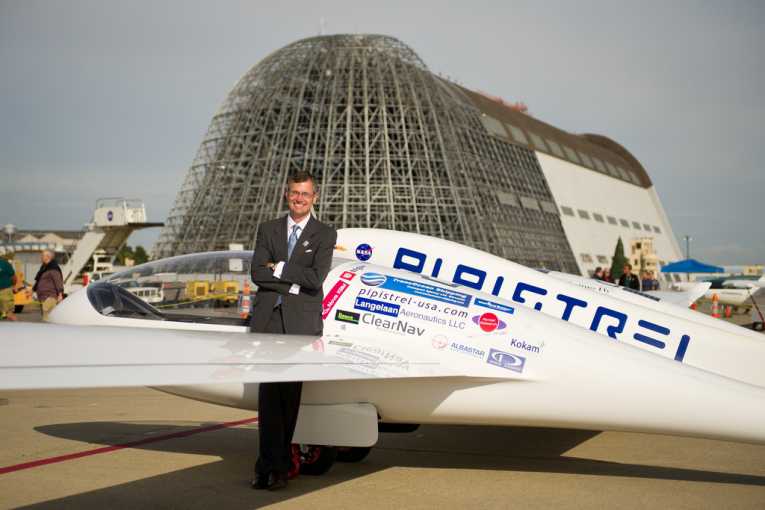Photo Credit: NASA/Bill Ingalls; Team Lead Jack Langelaan poses for a photograph next to the Pipistrel-USA, Taurus G4, aircraft prior to winning the 2011 Green Flight Challenge, sponsored by Google, on Monday, Oct. 3, 2011 at the NASA Ames Research Center, Mountain View, Calif
As we all tend to fly because of employment, vacation or a migration of some kind, the creation of a new fuel efficient plane would be relevant to our everyday lives. So NASA proposed the Green Aviation Prize, with record first place prize money of $1.35 million.
Aircraft had to fly 200 miles on less than one gallon of fuel per occupant (or the electrical power equivalent). Heavily involved with NASA are a non-profit making group of mainly Californian personal "flight enthusiasts" called the CAFE (Comparative Aircraft Flight Efficiency) Foundation with Google sponsoring the event.
While there is a thirty-year history to personal flight of this kind, the fact is we need more fuel-efficient transport. The planes chosen out of fourteen teams that applied from across the US were finally reduced to three, although a wide range of energy sources; mogas, diesel, bio-diesel, hydrogen and electricity, had been originally planned.
The three teams were PhoEnix, Pipistrel-USA (who had an interesting start to life in the 1980s in what was then Yugoslavia), and e-Genius, with two electric-powered aircraft and the PHoEnix using aviation "gas".
Despite the Californian emphasis (the team were from Ramona), the University of Stuttgart is behind e-Genius, with backing from Airbus-Industrie. Both this plane and the eventual winner, Pipistrel, proved that electric power is in the forefront, as they returned from the test flight with an incredible half- gallon equivalent of fuel left.
Such a great influx of technologies from what in fact is an international mix should encourage us to think beyond this air-race. These technologies, or at least the electrical one, look set to change lives apart from ours in the near future, as larger planes are built.
Taking advantage of such low-energy research, the huge emphasis on oil and other fuels in transport and beyond can be brought under control at last. NASA themselves could be back in some kind of space business!
Perhaps the winning team leader, Jack W. Langelaan, spoke most evocatively when he said, "Two years ago the thought of flying 200 miles at 100 mph in an electric aircraft was pure science fiction." "Now, we are all looking forward to the future of electric aviation."










